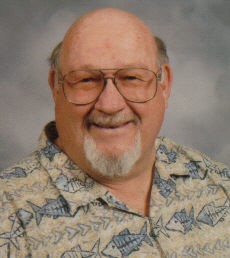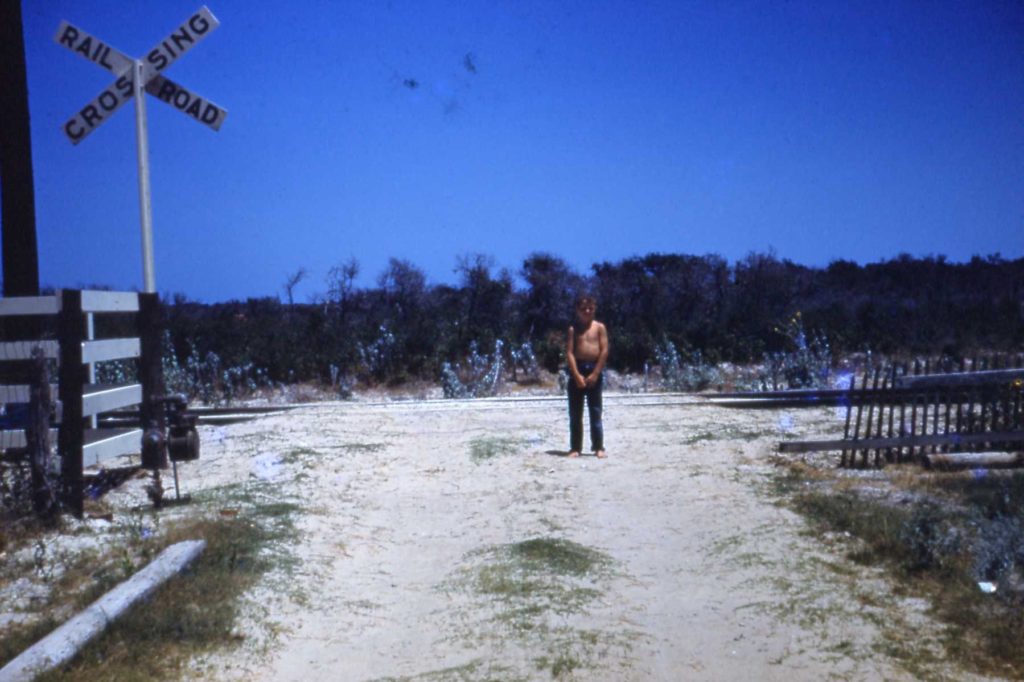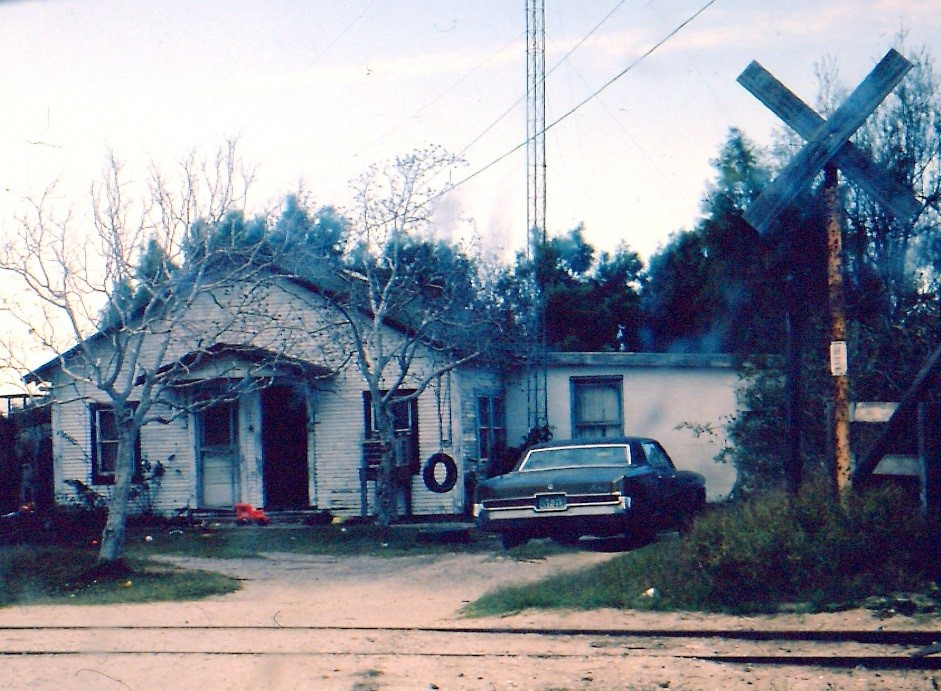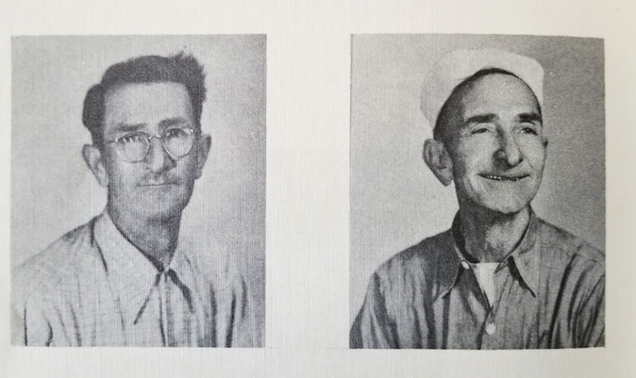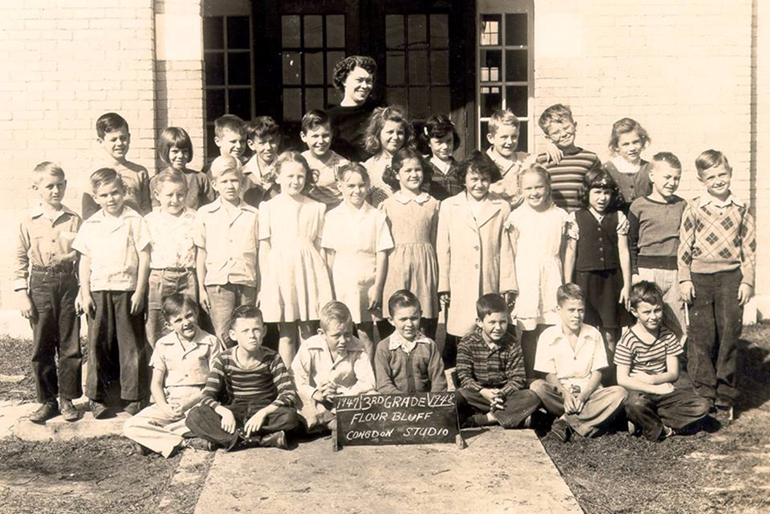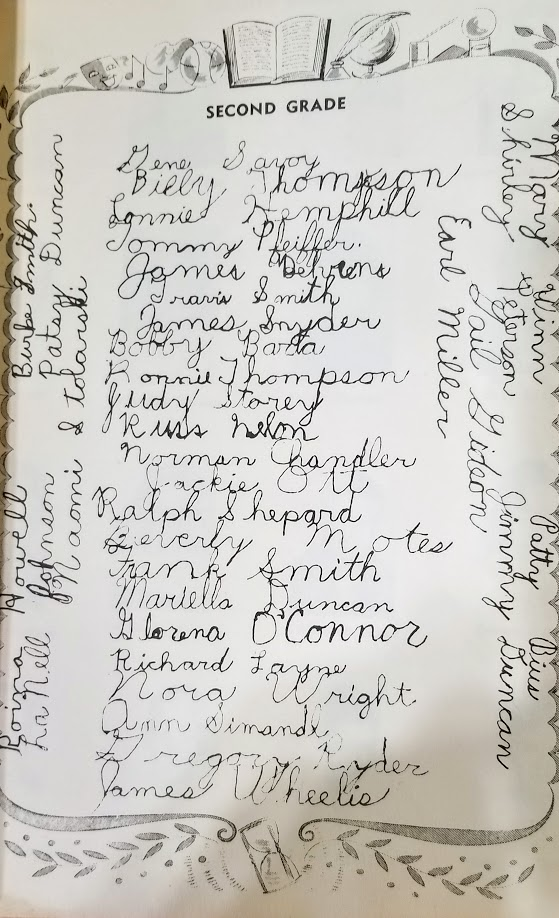To preserve the rich history of Flour Bluff, The Texas Shoreline News, will run historical pieces and personal accounts about the life and times of the people who have inhabited the Encinal Peninsula. Each edition will feature the stories gleaned from interviews held with people who remember what it was like to live and work in Flour Bluff in the old days. You won’t want to miss any of these amazing stories.
Don Crofton (Photo courtesy of Donald Crofton)
Born in 1939, Don Crofton moved to Flour Bluff from Corpus Christi in 1946 because his dad, James Albinus Crofton, wanted to live in the country. Don’s father was a former B-26 bomber crew chief in the army air corps who had taken a job at Dow Chemical, which is what brought him to Texas from Shreveport, Louisiana. However, it was his job as a draftsman at NAS Corpus Christi that brought led him to Flour Bluff and introduced him to J.B. Duncan, a man whose family had helped settle the Encinal Peninsula. Duncan sold James Crofton an acre of land with a house on it on a sandy road called Flour Bluff Drive. There, he moved his wife Louise and four of his ten children. The lot where the Crofton house stood is where the small gas plant near Murphy’s gas station is located today, just at the edge of what was then the Burton Dunn Ranch.
In those days, people didn’t waste materials. When the base dumped its left-over wood of all kinds – many times at Graham’s dump on Flour Bluff Drive – the civilian workers and the locals salvaged the materials and built their homes. Such was the case with the Crofton home, which was built by Duncan using quarter-inch plywood from shipping crates off the base. This attitude of making something out of nothing still exists in the Flour Bluff culture. People on the Encinal Peninsula understood the concept of reduce, reuse, and recycle long before it became a popular thing to say and do. They did it out of necessity.
“We didn’t realize we were poor,” said Crofton, the seventh of the ten kids. “Our family took care of us and loved us. What else could we want?”
The house had no running water, so a shallow well was dug by hand. “We hit water at 16 feet. It was a reddish-brown color, and it tasted really bad,” recalls Crofton. “My mom would ask people if they wanted some tea. To this day, I don’t drink water except out of fountains.”
Johnny Crofton stands looking at the Crofton house with the Tex-Mex railroad tracks and Flour Bluff Drive behind him. (Photo courtesy of Don Crofton)
Crofton recalls much about the property where he grew up. “Our property was lower than the railroad tracks, so it flooded a lot. We got a lot of rain back then,” said Crofton. “We had trouble with rattlesnakes, too. In one day we killed 26 of them, and one of them was in a mixing bowl in my mother’s kitchen!”
When asked how he and his siblings and friends spent their days at home, Crofton said, “We played football, hunted a lot, chased javelina. When we moved there, everything was brush except where our house, the chicken coop, and the well sat. Daddy had me, Tootsie, and George clearing the property. It was so slow cutting that brush.”
One Thanksgiving, just after dinner when Don’s father lay down for his nap, the kids had the idea to burn the brush. This was at a time when there was no fire department of any kind in Flour Bluff. “We got it out and saved the cat, but George lost his shoes,” said Crofton, “Boy, was our dad mad!”
After that, Crofton’s parents hired two old bachelors who drove the area in a Model T boom truck. “They had two mules that they used to plow and harrow it. We made a big pile of the roots and burned them,” said Crofton. “These guys worked all over Flour Bluff clearing brush land.”
“I heard tell of a place called Welcome Inn, a restaurant on the west side of Flour Bluff Drive at Graham Road, but I never saw it. J.B. Duncan lived down by the Oso on Graham Road,” said Crofton. “South of Graham was Tom Graham’s place. He had a dump and a slaughter house on his property. Far back on that property was the Hatley house where Charles Hatley grew up.”
Bobby Kimbrell, long-time Flour Bluff resident, also recalls the Welcome Inn. “It was owned by a fellow named De Gashe. He was kin to the Buhiders,” said Kimbrell. “Don is right about its location. It sat on Graham Road and Flour Bluff Drive.”
The Crofton house located at 1406 Flour Bluff Drive well after Louise Crofton sold it: “Our daddy would have had a fit if he had seen our house looking like this,” said Crofton. (Photo courtesy of Don Crofton)
Crofton also remembers a house fire that took a house near his when he was about ten years old. It was the home of Laura Dunn Burton, aunt of Greg Smith, current District 4 Councilman for Corpus Christi. “They evidently had silver platters and pitchers and such on shelves above the windows. The fire was so hot that it melted them. I will never forget the melted silver running down the windows.”
Smith said the house sat on the Burton Dunn Ranch, 52 acres near Don Crofton’s home. “It was bought by Burton Dunn in 1919 to hold the cattle that came off of Padre Island,” said Smith. He couldn’t recall how the house caught fire but said the long concrete porch was the only thing that remained after the fire. “The cowboys who lived on the ranch tried to put it out but couldn’t.”
Crofton, like so many Flour Bluff residents who lived on the peninsula in 1961, remembers what would become known as the most controversial election in Flour Bluff history. It was the day that Flour Bluff residents voted to incorporate on the same day that the City of Corpus Christi voted to annex the area.
“My father used to ask why we didn’t just incorporate the area from our house to Mud Bridge where there weren’t any streets, only houses. He said we didn’t really need to go into the city for anything anyway. ‘We could call it Plum Nelly – plum outta Corpus and Nelly in Flour Bluff,’ Crofton recalled his father saying. According to Don, the Flour Bluff sign was much farther inside the peninsula then.
Don started school at North Beach Elementary and then went to David Hirsch Elementary before enrolling in Flour Bluff when he was in third grade. On the first day of school in Flour Bluff, George, Johnny, Tootsie, and Don went to school on the bus. “We used to walk to school and back every day, which was about two miles. But, on our first day at Flour Bluff, we caught the bus. Flour Bluff had two bus drivers then, Mr. Meeks and Don Barr,” said Crofton. When the bus arrived at the school, George asked Don if it was the right place. Don didn’t know so he asked the bus driver where they were. When the bus driver told them it was grammar school, a term the boys had never heard, Don looked at George and said, “Oh, no, George, we’re in the wrong place. Let’s go!” That was just the start of Don’s days at Flour Bluff School where he excelled.
Charles B. Meeks (left) and Don G. Barr (right) were the “Hive Keepers” of Flour Bluff School, according to the 1947 Hornet yearbook. (Photo from 1947 Hornet Yearbook)
Ms. Carter was his teacher. “If you acted up, she’d grab your desk and shake it,” said Don. “Of course, she used a ruler on our hands, too. We never wrote in print either; everything had to be in cursive. I remember that she had a picture of Wynken, Blynken, and Nod above the chalk board.”
Don is in the front row, third from the right. The teacher pictured is Dorothy Arnold, though Miss Carter was his teacher in third grade. (Photo courtesy of Don Crofton)
Second Grade page from 1946-47 Junior Hornet Yearbook, proof that the students were writing cursive well in second grade at Flour Bluff School.
Flour Bluff School was not very big when started there, but it was a place he liked. “We had Sticker Burr Stadium and Doty’s Beans,” Crofton said. “We ate in a little wooden building next to the school. Miss Doty cooked a pot of beans every day for the kids who didn’t have lunch or money for lunch. We called them Doty’s Beans. We also got a big spoon of peanut butter and a big spoon of black molasses with every meal.”
Don would remain in Flour Bluff School until 1957 when he graduated second in his class behind Nora Jean Wright, the valedictorian. Crofton received the title of salutatorian, which earned him a scholarship from the school. Jim Duncan, who came in at a very close third, received a duplicate scholarship. Don would find himself back at the school many years later, this time on the other side of the teacher’s desk.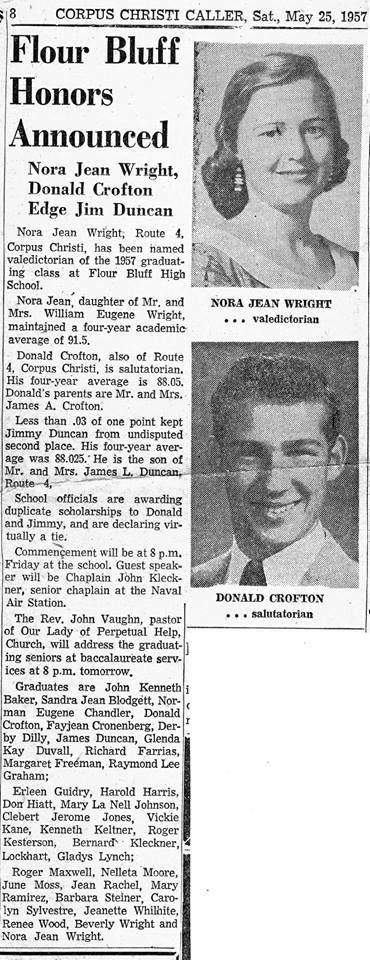
Clipping from Corpus Christi Caller Times
________________________________________________________________________________
Be sure to pick up the next edition of The Texas Shoreline News to read more about the days gone by in Flour Bluff. To share these stories about Flour Bluff history with others online, visit https://texasshorelinenews.com/.
The editor welcomes all corrections or additions to the stories to assist in creating a clearer picture of the past. Please contact the editor at [email protected] to submit a story about the early days of Flour Bluff.
